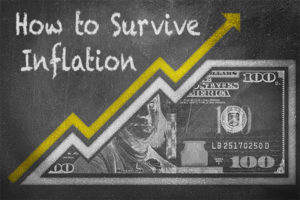Defaults on the Rise as College Grads Drown in Student Loan Debt
Student loan debt could be the next economic bubble waiting to burst.
Banks wrote off $3 billion in student loan debt the first two months of 2013, and an estimated 850,000 former students have defaulted on loans, but that is just a snapshot of the big picture of debt that is drowning many college graduates.
According to FICO, a credit-reporting agency, the average college student with debt owes $27,253, a whopping 58 percent increase in the last seven years. And for the first time in history, the amount owed and delinquency rate for student loans exceed that of credit cards.
College loan debt passed the $1 trillion mark in 2012. It was the only major form of credit – mortgage, credit cards, auto loans, etc. – that rose in 2012. Credit card debt shrank in 2012 to $798 billion.
Data show a growing number of student borrowers can’t afford their student loan payments. Delinquency rate for federal loans was 12.3 percent in March 2012, while delinquency rates for credit cards dropped to an 18-year low during the summer of 2012.
Trouble is Coming
Analysts say much of the problem is that recent graduates are either under-employed or unemployed. There also was a surge of workers who went back to college during the “Great Recession” hoping to improve their job skills. They emerged with debt, and if they got a job, it often paid less than they made at the time they were laid off.
The cumulative effect is a simmering cauldron of problems that could boil over into a crisis for a U.S. economy already limping.
“The high number of defaults certainly has a negative impact on the economy,” U.S. Rep. Tom Petri, R-Wis., told Debt.org. “It’s expensive for the government and damaging to the credit of borrowers. Borrowers that have poor credit are less likely to buy a house or car.”
Petri announced in December 2012 his intention to present a bill to Congress that would make loan repayment an income-based, automatic withdrawal from an employee’s paycheck. The withdrawal would be based on the borrower’s salary, as opposed to the current practice of setting a standard monthly payment that doesn’t change over the life of the loan.
An income-based program already is available on federal student loans, but it requires the employee to submit income and family size documentation every year to demonstrate eligibility. There are other conditions that make it unpopular, and some students don’t even know it exists.
Employers Could Withhold Student Loan Payments
Petri’s proposal would consolidate students’ federal loans into one account and require employees to make their employers aware of outstanding debt. Employers would withhold a fixed percentage of the borrower’s paycheck each week, the same way they do for taxes, and the money would be sent to the federal government.
Because the amount withheld is based on a percentage of the employee’s salary, it would rise – or fall – depending upon how much money is earned. It also largely would eliminate the need to negotiate with loan-servicing companies and debt collectors and should cut down on defaults because the money would get repaid every week the employee worked.
There also is a similar income-based model run in the United Kingdom that has 98 percent of its borrowers meeting their obligations, according to Petri’s office.
“Students would have to repay what they borrow, but they wouldn’t face interest spiraling out of control just because of a temporary bout of unemployment,” Petri said. “This approach protects borrowers from the financial ruin that comes with student loan default, and it protects the taxpayers who currently have to spend a lot to collect defaulted loans.”
Sources:
- Touryalai, H. (2013, January 29). More Evidence On The Student Debt Crisis: Average Grad’s Loan Jumps To $27,000. Forbes. Retrieved from http://www.forbes.com/sites/halahtouryalai/2013/01/29/more-evidence-on-the-student-debt-crisis-average-grads-loan-jumps-to-27000/
- Hayward, J. (2013, March 26). Is The Student Loan Bubble About To Pop? Humanevents.com. Retrieved from http://www.humanevents.com/2013/03/26/is-the-student-loan-bubble-popping/



















